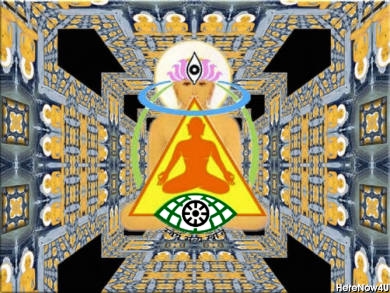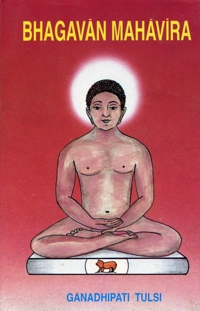| 1 | Before The Advent Of Bhagavan Mahavira |

hange is the immutable and universal law of nature. The rise and fall of men and the strength and weakness of movements are determined by this law. The movement of ahimsa and self-discipline, which Bhagavan Parsva had launched, began to lose its momentum within a couple of centuries of his nirvana. When Bhagavan Mahavira started his career, he found social values in the melting pot. Society was governed by brute force. Kings had become deified. Their subjects were forced to acknowledge their sovereignty and to bear the yoke of tyranny as a matter of duly. The royal priests had whipped up such a psychosis of respect for the kings that their edicts came to be treated as divine decrees. To oppose them was to invite vengeance.
Wealth had begun to be worshipped. Society became divided into the rich and the poor. Human beings were purchased and converted into slaves and treated as cattle or beasts of burden. The masters were entitled to punish them in any way they liked. Royal power and the power of wealth forced a division between men and men. The principle of human equality and unity became eclipsed. Casteism began to encourage social discrimination. The sudras were considered low and the untouchables lower still. Human intelligence came to be discredited and a man's worth was measured according to the status of his caste, power and wealth. This resulted in a sense of superiority in the wealthy and that of inferiority in the poor. The popular faith in the distorted doctrine of karma contributed its share in developing such a situation. The wretched were supposed to have been born with the evil effects of their misdeeds in the past life, which they must pay for with suffering in this life. They were expected to bear their present miseries with patience.
There was very little education and it was limited to the rich few. The common man lived by physical labour only. He was not at all awakened to raise his voice against injustice.
There were two main traditions of religion—the Sramana and the Vedic. The Sramanas were organised into several samghas or monastic orders and the most highly enlightened leaders of these organizations were known as tirthankaras. There were several sects of the Vedic tradition also. The Rsis of the Vedic tradition were theists, while the sages of the Upanisads professed the philosophy of the Brahman. Some of the Sramana Acaryas were also theists. But most of them professed the philosophy of the nirvana and the Atman (liberation and the self).

[ ]
All the religious teachers were seriously engaged in resolving the profound mysteries of the universe. While some of them tried to comprehend Truth through meditation and ascetic practices, others attempted to do so through worship and spells. Those who worshipped Sakti (Cosmic Power) and practised charms looked upon all violence committed for the propitiation of the gods as proper and legitimate and performed animal sacrifice. Rituals (vajnas) were performed to secure heaven. It was believed that the ritual of bathing in water lead to self-purification. On the basis of the doctrine that the mortification of the body lead to liberation, many an ascetic performed penances by beating their bodies with the aggregate of five fires burnt around their bodies under the scorching heat of the sun. Some of the ascetics went to the extent of lying down on the sharp edges of iron nails.
It was a predominantly religious age. The kings and their subjects believed in the life of the spirit. The status of religion was higher than that of the state. But there were also those who repudiated religion, though they were in a negligible minority. However, they did not command respect in the society. That is why religion and those who practised it came to acquire considerable prestige. The number of ascetics in all the sects was fairly large. Thousands of monks were seen wandering in groups from village to village. They belonged to diverse sects and sub-sects, and met and engaged each other in metaphysical discussions to understand each other's view-point.
The votaries of Sakti did not look upon the subduing of passions as indispensable. It was the spiritualists alone who considered it sine qua non. They, therefore, maintained that one could not attain liberation without getting freedom from the passions of attachment and aversion.
Attachment to material comforts and sensuous pleasures is one of the instincts of man. It leads men to clash of interests. But when conflicts reach their climax, people are as by necessity driven to seek for spiritual solutions. This Situation is a prelude to the advent of a great spiritual leader who would lift society to a higher stage of spiritual development. When the psychological background for a change has been prepared, society takes a leap.
 Acharya Tulsi
Acharya Tulsi

